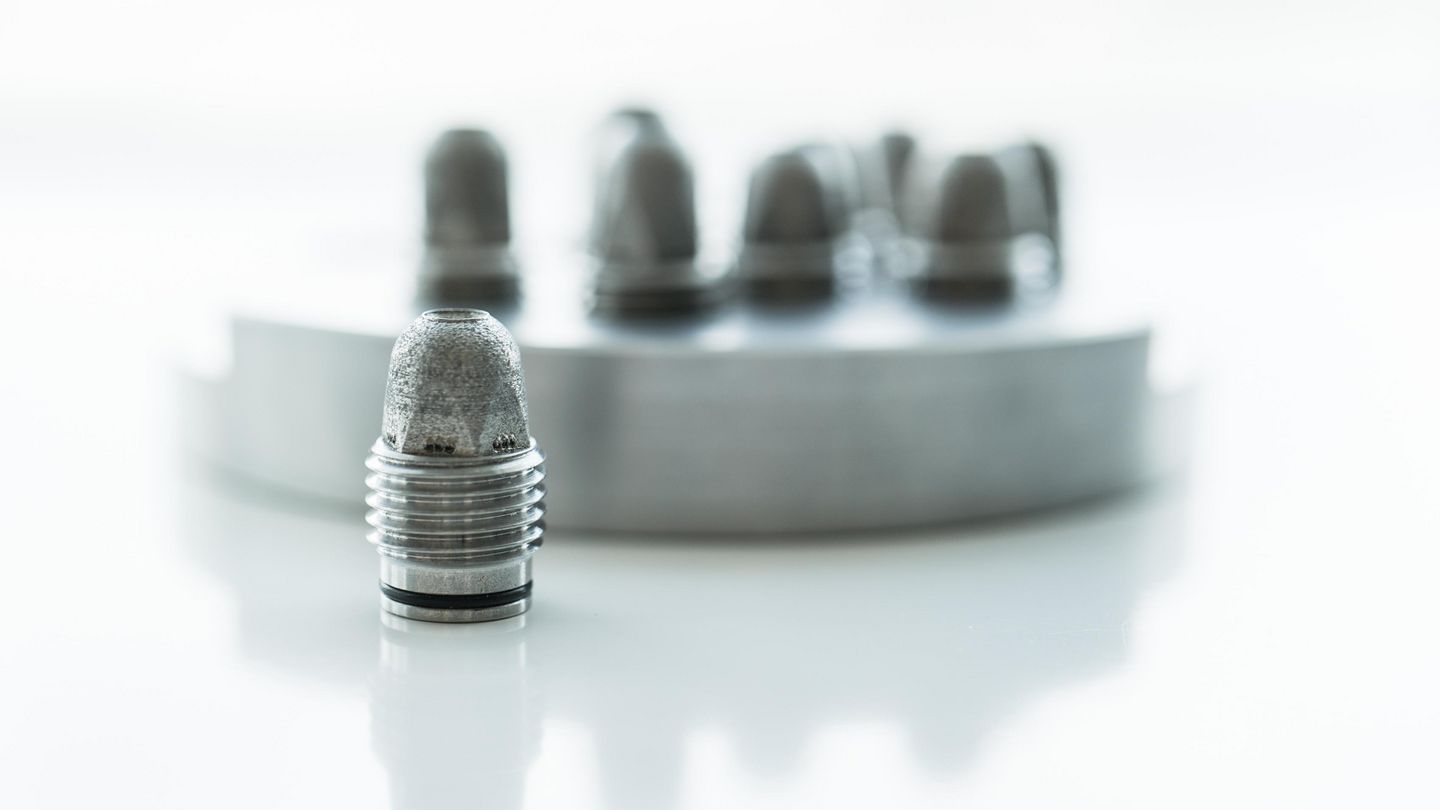EMO Hannover 2019: TRUMPF is expanding the scope of 3D printing

The high-tech company TRUMPF will show how 3D printing can drive advances in various industrial sectors with a showcase at EMO Hannover, the world's leading metalworking trade fair. Additive manufacturing processes enable the creation of unprecedented complex shapes that are both light and stable. With the benefit of digital connectivity, they fit seamlessly into state-of-the-art manufacturing systems in use today. The 3D printer is a key tool for many manufacturing processes ranging from mass customization to one-off builds. It can print anything from bespoke facial implants to special parts for cars or airplanes. Able to print components in one piece, these systems often spare vendors the effort of multiple manufacturing steps. “Interest in additive manufacturing technologies remains high because the process’s benefits are proving their merits in more and more practical applications. This applies as much to conventional metalworking companies as it does to future products in the aerospace industry,” says Thomas Fehn, general manager at TRUMPF Additive Manufacturing. TRUMPF is one of the few providers of 3D printers to develop its own lasers, the most important component of the machine. This enables the company to rapidly branch out into new applications and continuously improve the process. For example, TRUMPF recently printed copper and gold with a green laser for the first time. The jewelry and electronics industries stand to benefit from this promising innovation.
Three examples of TRUMPF 3D printing in industrial manufacturing
1. Personalized craniomaxillofacial implants
Russian medical device manufacturer CONMET has been using a TRUMPF 3D printer to produce craniomaxillofacial implants since early 2018. Creating implants for use in surgery has been a stressful business until now. The surgeon has to cut the craniomaxillofacial implant out of a perforated titanium plate during the procedure and then shape it to size. This is a taxing task where the time pressure can have a negative impact on the quality of fit. Such procedures are much easier with a 3D-printed implant. First, the hospital determines the patient’s data and sends it to CONMET. Its engineers draw on this data to create a CAD model and design the implant in consultation with the surgeon. Then the 3D printer can go to work. The implant is ready for insertion, precisely fitted and cleaned, before the procedure begins. This enhances patient safety while cutting costs and speeding up surgery. The system makes light work of the kind of complex topologies that implants often require. What it more, it can print parts that are sturdy and durable while still cushioning against blows. The implant’s porous structures facilitate the ingrowth of healthy tissue. Prices also come down as additive manufacturing only uses as much material as the implant actually needs. CONMET has managed to reduce the cost of manufacturing craniomaxillofacial implants by around 40 percent. The company is planning to step up mass manufacturing of implants with TRUMPF 3D printers and add more machines to its inventory.
2. A lightweight mounting bracket for communication satellites
TRUMPF has been commissioned by the space company Tesat-Spaceroom to produce a 3D-printed mounting structure for Germany’s Heinrich Hertz communications satellite, which will be used to test the space-worthiness of new communication technologies. The mount holds strap-on motors serving to control microwave filters. In collaboration with the company AMendate, TRUMPF engineers succeeded in optimizing the geometry of the mounting structure and reducing its weight by 55 percent. It now weighs just 75 grams instead of 164 grams. “This is just one example of how we can use additive processes in satellite construction to reduce weight and increase payload capacity,” says Matthias Müller, industry manager for aerospace and energy at TRUMPF Additive Manufacturing. The experts printed the redesigned part on TRUMPF’s TruPrint 3000 3D printer. The new geometry cannot be produced by conventional means. This optimized mount is both lighter and more robust. During the launch of the satellite the new mounting structure will withstand the same high forces and will hold its shape better. The Heinrich Hertz satellite mission is carried out by DLR Space Administration on behalf of the Federal Ministry of Economics and Energy and with the participation of the Federal Ministry of Defense.
3. Easy-to-make sewer cleaning nozzles
TRUMPF joined forces with USB Düsen and Heilbronn University of Applied Sciences to demonstrate the benefits of 3D printing in the fabrication of cleaning nozzles for sewers. These nozzles are mounted on the head of cleaning “bombs” that slide down channels on carriages, spraying jets of water at 300 bar pressure to dislodge sludge in larger sewer lines. Although the nozzles’ design is simple, it stills takes workers four steps to make these components. First, they have to cut the raw material, then thread it on a lathe, mill out a nut and finally glue in a ceramic base. The worker has to constantly move from one machine to the next, and gluing often leaves imperfections. The 3D-printed variant eliminates the need for milling and gluing. The component can be printed without any supporting structures, so there is no finishing work to be done afterwards. The software-driven process is far more accurate than manual gluing. Measurements have shown that printing cuts production time by 53 percent. For the first time, this will allow up to 10,000 parts to be manufactured per year. Another benefit is a smoother flowing jet of water. TRUMPF engineers expect the new nozzles to reduce water consumption and boost cleaning performance.




